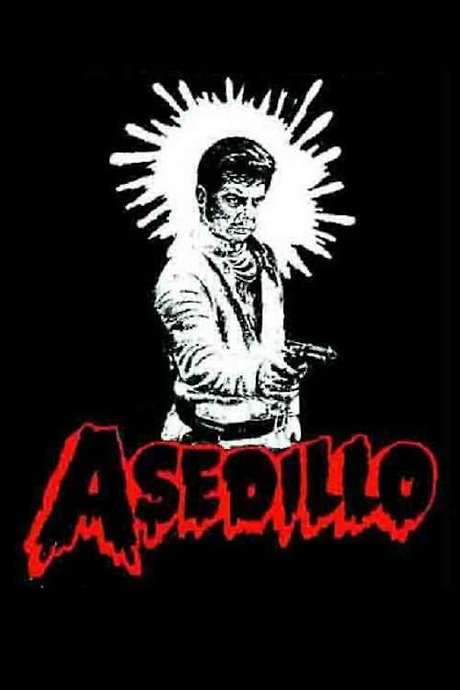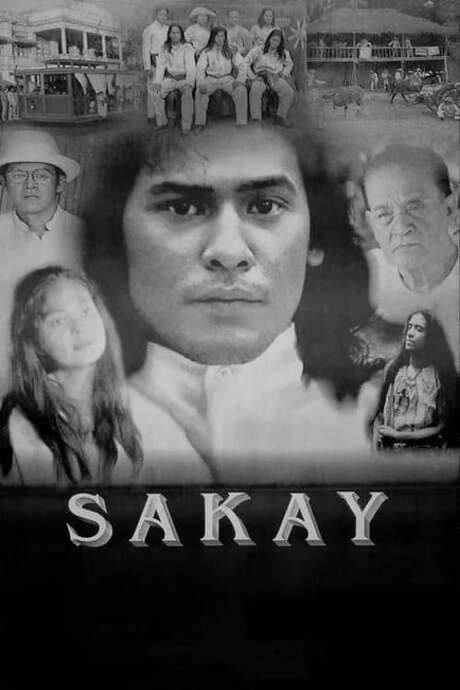
José Rizal
Year: 1998
Runtime: 178 mins
Language: Tagalog
Director: Marilou Diaz-Abaya
Dr. José P. Rizal, accused of treason, meets his counsel Luis Taviel de Andrade. While preparing the defense, flashbacks show key moments of Rizal’s patriotic life. Taviel recognizes Rizal’s innocence and extraordinary character. Their mock trial ends with Rizal’s stirring speech, as Spanish officials press for a guilty verdict while a revolution brews.
Warning: spoilers below!
Haven’t seen José Rizal yet? This summary contains major spoilers. Bookmark the page, watch the movie, and come back for the full breakdown. If you're ready, scroll on and relive the story!
José Rizal (1998) – Full Plot Summary & Ending Explained
Read the complete plot breakdown of José Rizal (1998), including all key story events, major twists, and the ending explained in detail. Discover what really happened—and what it all means.
In 1896, Cesar Montano portrays Jose Rizal, who is imprisoned in Fort Santiago for his dissident activities, while in a nearby field in Balintawak, Ronnie Lazaro embodies Andres Bonifacio as he and his fellow Katipunan rebels tear their cedulas to signal a rising cry for freedom from Spanish rule. The film follows a tense, intertwined path between Rizal’s intellect and Bonifacio’s rising zeal, tracing how these separate currents converge into a broader struggle for independence.
A quiet, poignant thread runs through Rizal’s days in confinement as a first lieutenant of the Artillery, Taviel de Andrade, Jaime Fabregas visits and forges a genuine bond with him. Their conversations are filled with warmth, humor, and a mutual respect for each other’s courage, and Christmas is spent together in Rizal’s cell, sharing drinks, songs, and a growing sense of camaraderie that transcends their different worlds. This connection complicates Rizal’s path, even as Blanco, the Governor General who seems sympathetic to Rizal’s cause, is quietly displaced by corrupt factions led by Manila’s archbishop, Peque Gallaga who steps in as Archbishop Bernardo Nozaleda, OP, and Camilo de Polavieja, shifting the balance of power in the colony.
The narrative then broadens into Rizal’s rich life outside captivity, drawing on flashbacks that illuminate his childhood, education, and professional work as a doctor. We witness his prolific writing, including the creation of the two novels Noli Me Tangere and El filibusterismo—works that are dramatized through key scenes from their pages. Rizal’s return to the Philippines after a dispute with reformists in Madrid leads him to found La Liga Filipina, where he meets Bonifacio and discovers a shared longing for reform that could redefine the nation. The tale also explores Rizal’s four-year stay in Dapitan, where he practices medicine, mentors youth, and experiences love with Josephine Bracken, Chin-Chin Gutierrez, who bears him a child that does not survive.
As 1896 unfolds, Rizal faces trial at the Real Audiencia. Despite a passionate defense by Jaime Fabregas as Taviel de Andrade, the magistrates condemn him to be executed by firing squad at Luneta on December 30. Rizal accepts the verdict with quiet dignity, and his family visits him, underscoring the personal cost of political conflict. On the eve of his death, a dreamlike sequence brings him face to face with Crisostomo Ibarra in his Simoun guise, a figure who tempts him to alter the fatal arc of his own story. In the midst of this inner struggle, Rizal composes his final poem, which becomes a symbol of his resolve.
Mi último adiós
The following morning, Rizal confronts the crowd at the execution site with humility. He asks that his head be spared rather than his life extended by a mercy shot, and the captain agrees. When the firing squad finally aims, Rizal speaks his last words, Consummatum est, before collapsing to the ground as the crowd erupts in mixed emotion—Filipinos mourning a fallen hero and Spaniards celebrating the burden finally lifted from their shoulders. The scene marks a profound shift in the national mood and catalyzes further resistance, even as Rizal’s image remains on the wall of his headquarters, looking down on a revolution that will eventually lead to independence proclaimed two years later in 1898.
In the aftermath, the Katipunan continues to intensify its uprising with Bonifacio at the helm, orchestrating ambushes and revenge against colonial forces, including attacks on friars who symbolize the oppressors of the era. The film grounds these upheavals in personal histories, recalling Rizal’s friendships, romances, and the deep moral questions that guided his life. As the epilogue unfolds, Rizal’s legacy lingers in photographs and symbols of resistance, reminding viewers of the long road from the fires of Balintawak to the hard-won proclamation of independence.
Throughout, the film interweaves a broad cast of characters to illuminate a pivotal moment in Filipino history. Gina Alajar appears as Saturnina, a sister figure whose presence enriches Rizal’s world; Monique Wilson embodies Maria Clara, whose own story embodies the tensions between duty, love, and national destiny; and Pen Medina embodies Paciano, Rizal’s close ally. The film also weaves in a range of historical figures and witnesses—from Marco Sison as Pio Valenzuela to Minco Fabregas as Padre Sanchez and Chiqui Xerxes-Burgos as Father Villaclara—each adding texture to the epic tapestry of rebellion, sacrifice, and memory. The story does not shy away from the human costs of revolution, portraying the tenderness, heartache, and unwavering commitment that propelled a nation toward self-determination.
Last Updated: October 09, 2025 at 09:20
Unlock the Full Story of José Rizal
Don't stop at just watching — explore José Rizal in full detail. From the complete plot summary and scene-by-scene timeline to character breakdowns, thematic analysis, and a deep dive into the ending — every page helps you truly understand what José Rizal is all about. Plus, discover what's next after the movie.
José Rizal Timeline
Track the full timeline of José Rizal with every major event arranged chronologically. Perfect for decoding non-linear storytelling, flashbacks, or parallel narratives with a clear scene-by-scene breakdown.

Characters, Settings & Themes in José Rizal
Discover the characters, locations, and core themes that shape José Rizal. Get insights into symbolic elements, setting significance, and deeper narrative meaning — ideal for thematic analysis and movie breakdowns.

Similar Movies to José Rizal
Discover movies like José Rizal that share similar genres, themes, and storytelling elements. Whether you’re drawn to the atmosphere, character arcs, or plot structure, these curated recommendations will help you explore more films you’ll love.
Explore More About Movie José Rizal
José Rizal (1998) Scene-by-Scene Movie Timeline
José Rizal (1998) Movie Characters, Themes & Settings
José Rizal (1998) Spoiler-Free Summary & Key Flow
Movies Like José Rizal – Similar Titles You’ll Enjoy
Josep (2022) Plot Summary & Ending Explained
José (2020) Full Movie Breakdown
Amigo (2011) Full Summary & Key Details
Salome (1981) Movie Recap & Themes
A Rustling of Leaves: Inside the Philippine Revolution (1988) Plot Summary & Ending Explained
Heneral Rizal (2020) Story Summary & Characters
1521: The Quest for Love and Freedom (2023) Ending Explained & Film Insights
Asedillo (1971) Plot Summary & Ending Explained
Man, Pride and Vengeance (1967) Story Summary & Characters
Independencia (2009) Movie Recap & Themes
Blood and Sand (1922) Complete Plot Breakdown
Rizal in Dapitan (1997) Full Movie Breakdown
Baler (2008) Complete Plot Breakdown
Santiago! (1970) Detailed Story Recap
Sakay (1993) Full Summary & Key Details

















